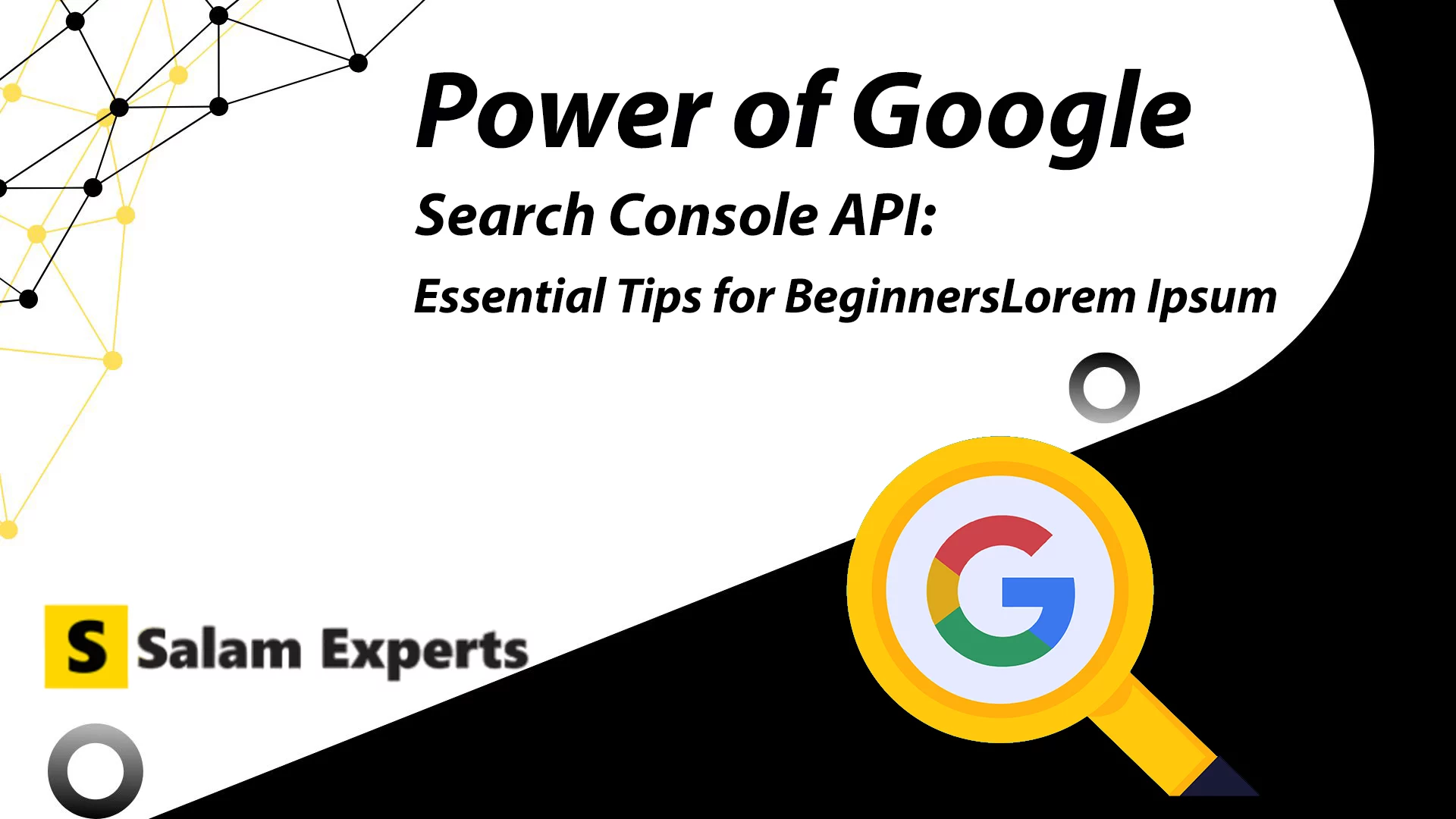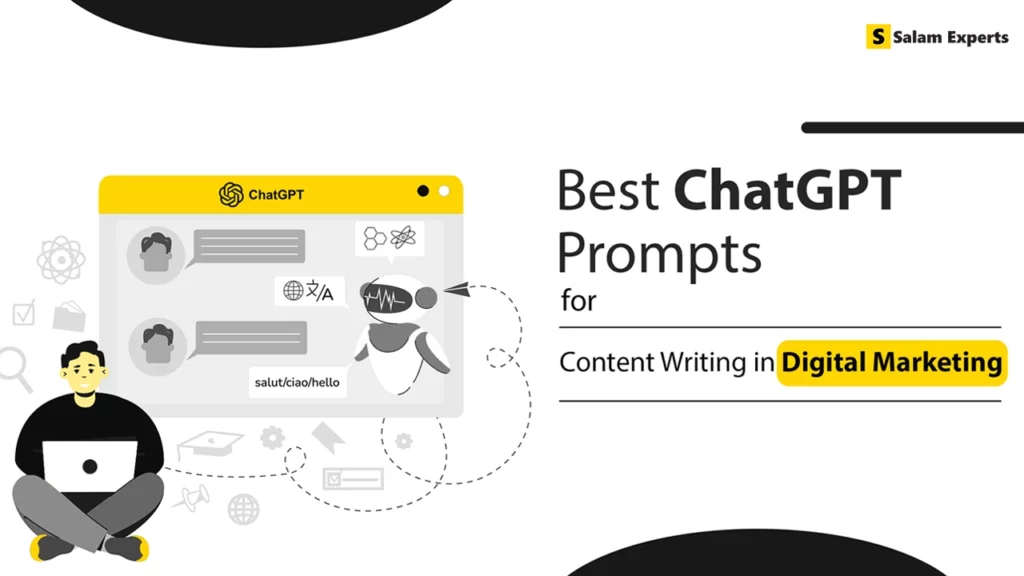Power of Google Search Console API: Essential Tips for Beginners

In the digital age, understanding and optimizing your website’s performance is crucial for success. SEO professionals and website owners constantly seek ways to gain deeper insights into their website’s search engine visibility. One powerful tool that can significantly enhance your SEO strategy is the Google Search Console API. This article will guide beginners through the essentials of using the Google Search Console API, offering valuable tips to unlock its full potential and elevate your SEO efforts.
What is the Google Search Console API?
The Google Search Console API is a powerful tool that provides programmatic access to the data available in your Google Search Console account. This API allows you to retrieve and analyze search performance data, manage sitemaps, monitor indexing status, and more—without having to manually navigate through the Google Search Console interface. By leveraging this API, you can automate data extraction, create custom reports, and integrate Google Search Console data with other tools and platforms for a more comprehensive SEO strategy.
Why Should You Use the Google Search Console API?
Integrating the Google Search Console API into your SEO toolkit can offer several significant benefits:
- Automated Data Retrieval: Save time and reduce manual effort by automating the extraction of search performance data, such as clicks, impressions, and average position.
- Custom Reporting: Tailor your data retrieval to focus on specific keywords, pages, or devices, enabling you to create detailed, custom reports that are aligned with your SEO goals.
- Real-Time Monitoring: Access up-to-date data and monitor your website’s performance in real-time, allowing you to make quicker adjustments to your SEO strategy.
- Integration with Other Tools: Combine Google Search Console data with other analytics tools, such as Google Analytics or CRM systems, to gain deeper insights into user behavior and website performance.
- Scalability: Whether you’re managing a small blog or a large e-commerce site with thousands of pages, the API can handle large volumes of data efficiently, making it ideal for websites of any size.
Getting Started with the Google Search Console API
Starting with the Google Search Console API may seem daunting, but with the right approach, you can quickly integrate it into your workflow. Here’s a step-by-step guide to help you get started:
1. Setting Up Your Google Cloud Project
Before you can start using the Google Search Console API, you need to set up a project in the Google Cloud Console. This project will serve as the foundation for accessing the API.
- Create a New Project: Go to the Google Cloud Console and create a new project. Give your project a descriptive name that reflects its purpose, such as “SEO Data Analysis.”
- Enable the Google Search Console API: Once your project is created, navigate to the API & Services section, search for “Google Search Console API,” and enable it. This step is crucial as it allows your project to make requests to the API.
2. Obtaining API Credentials
To interact with the Google Search Console API, you need to authenticate your requests using API credentials.
- Create API Credentials: In the Google Cloud Console, go to the “Credentials” section and click on “Create Credentials.” You can choose between an API key or OAuth 2.0 client ID. An API key is simpler to use, but OAuth 2.0 is more secure and is required for accessing user-specific data.
- Set Up OAuth 2.0 (If Chosen): If you opt for OAuth 2.0, you’ll need to configure the OAuth consent screen by providing details about your application, such as the name, logo, and the data you’re requesting. This process ensures that users understand what data they are sharing with your application.
3. Installing the Google API Client Library
Google provides client libraries in various programming languages, such as Python, Java, and JavaScript, to simplify the process of making API requests.
Python Example: If you’re using Python, install the client library with the following command:
pip install google-api-python-client
JavaScript Example: For JavaScript, you can install the client library using npm:
npm install googleapis
These libraries handle many of the technical details involved in interacting with the API, making it easier to focus on retrieving and analyzing the data.
4. Authenticating and Authorizing API Requests
After setting up your credentials, you need to authenticate and authorize your requests to access the Google Search Console API.
- Using an API Key: If you opted for an API key, include it in your request URLs to authenticate your requests. This method is straightforward but offers limited access to data.
- Using OAuth 2.0: For OAuth 2.0, you’ll need to follow the OAuth flow to obtain an access token. This token is then used to authorize your API requests. The process typically involves redirecting users to a Google authorization page and handling the callback to capture the token.
5. Making Your First API Request
Once authenticated, you can begin making requests to the Google Search Console API. Here’s an example of how to retrieve search analytics data using Python:
Python Example:from googleapiclient.discovery import build
from google.oauth2 import service_account
# Load your credentials
credentials = service_account.Credentials.from_service_account_file(‘path/to/your/credentials.json’)
# Build the API service
service = build(‘webmasters’, ‘v3’, credentials=credentials)
# Make a request to the search analytics API
response = service.searchanalytics().query(
siteUrl=’https://example.com’,
body={
‘startDate’: ‘2025-01-01’,
‘endDate’: ‘2025-01-31’,
‘dimensions’: [‘query’],
‘rowLimit’: 10
}
).execute()
# Process and display the response
for row in response[‘rows’]:
print(f”Query: {row[‘keys’][0]}, Clicks: {row[‘clicks’]}, Impressions: {row[‘impressions’]}”)
This script retrieves the top 10 search queries for your site during January 2025, providing insights into how users are finding your website.
Key Features of the Google Search Console API
The Google Search Console API offers a range of features that can significantly enhance your SEO efforts. Understanding these features will help you make the most of the API.
Search Analytics
- What It Does: Provides detailed reports on search queries, clicks, impressions, click-through rates, and average positions.
- Why It Matters: This data is crucial for understanding how your content performs in search results and identifying opportunities for optimization.
URL Inspection
- What It Does: Allows you to programmatically inspect URLs to check their indexing status, detect potential issues, and request re-indexing when necessary.
- Why It Matters: Ensures that your important pages are properly indexed by Google, which is essential for maintaining search visibility.
Sitemaps Management
- What It Does: Enables you to manage your site’s sitemaps, including submitting new sitemaps, checking their status, and retrieving information on indexed URLs.
- Why It Matters: Sitemaps are critical for helping search engines discover and index all relevant pages on your site.
Crawl Errors Reporting
- What It Does: Identifies and reports crawl errors, such as broken links or server issues, that might be preventing Googlebot from accessing your site’s content.
- Why It Matters: Fixing crawl errors ensures that all your pages can be accessed and indexed by Google, improving your site’s overall performance.
Security Issues Monitoring
- What It Does: Monitors your site for security issues, such as malware or phishing attacks, and alerts you to take action.
- Why It Matters: Maintaining a secure website is not only important for user trust but also for maintaining good standing with search engines.
Practical Applications of the Google Search Console API
Understanding how to apply the Google Search Console API to your SEO strategy can help you unlock its full potential. Here are some practical use cases:
Automated SEO Reporting
- Use Case: Set up automated reports that retrieve and display key SEO metrics, such as clicks, impressions, and average position, at regular intervals.
- Benefit: Keeps you informed of your site’s performance without manual effort, allowing you to make timely adjustments to your strategy.
Custom Data Dashboards
- Use Case: Create custom dashboards that display data relevant to your specific SEO goals, such as tracking the performance of specific keywords or landing pages.
- Benefit: Provides a clear and personalized view of your SEO performance, making it easier to identify trends and opportunities.
Performance Trend Analysis
- Use Case: Analyze historical data to identify trends in your site’s search performance, such as seasonal fluctuations or the impact of algorithm updates.
- Benefit: Helps you anticipate changes in search traffic and adjust your strategy accordingly.
Crawl Error Monitoring
- Use Case: Regularly check for crawl errors using the API and set up alerts to notify you of new errors as they occur.
- Benefit: Ensures that any issues that might prevent Google from indexing your site are addressed promptly, minimizing their impact on your search rankings.
Dynamic Sitemap Submission
- Use Case: Automatically submit new sitemaps to Google Search Console whenever you add or update content on your site.
- Benefit: Ensures that Google is always aware of your latest content, helping it get indexed more quickly.
Best Practices for Using the Google Search Console API
To maximize the benefits of the Google Search Console API, it’s important to follow best practices:
- Start with Clear Goals: Before diving into the API, define your SEO goals and identify the specific data you need to achieve them. This will help you make more focused and effective use of the API.
- Monitor API Quotas: The Google Search Console API has usage limits. Monitor your API usage to avoid exceeding these quotas, which could disrupt your access to the data.
- Secure Your API Credentials: Keep your API credentials secure to prevent unauthorized access. If using OAuth 2.0, ensure that your token storage is secure and that tokens are refreshed regularly.
- Stay Updated with Google’s Changes: Google periodically updates its APIs. Keep an eye on announcements and documentation updates to ensure that your integration continues to work smoothly.
- Regularly Audit Your Data: Use the API to regularly audit your search performance data, checking for discrepancies or issues that could indicate problems with your SEO strategy.
Conclusion
The Google Search Console API is a powerful tool that can revolutionize the way you approach SEO. By automating data retrieval, enabling custom reporting, and integrating with other tools, the API provides the insights you need to make informed decisions and drive better results for your website. By following the tips and best practices outlined in this guide, you can unlock the full potential of the Google Search Console API and take your SEO efforts to new heights.






